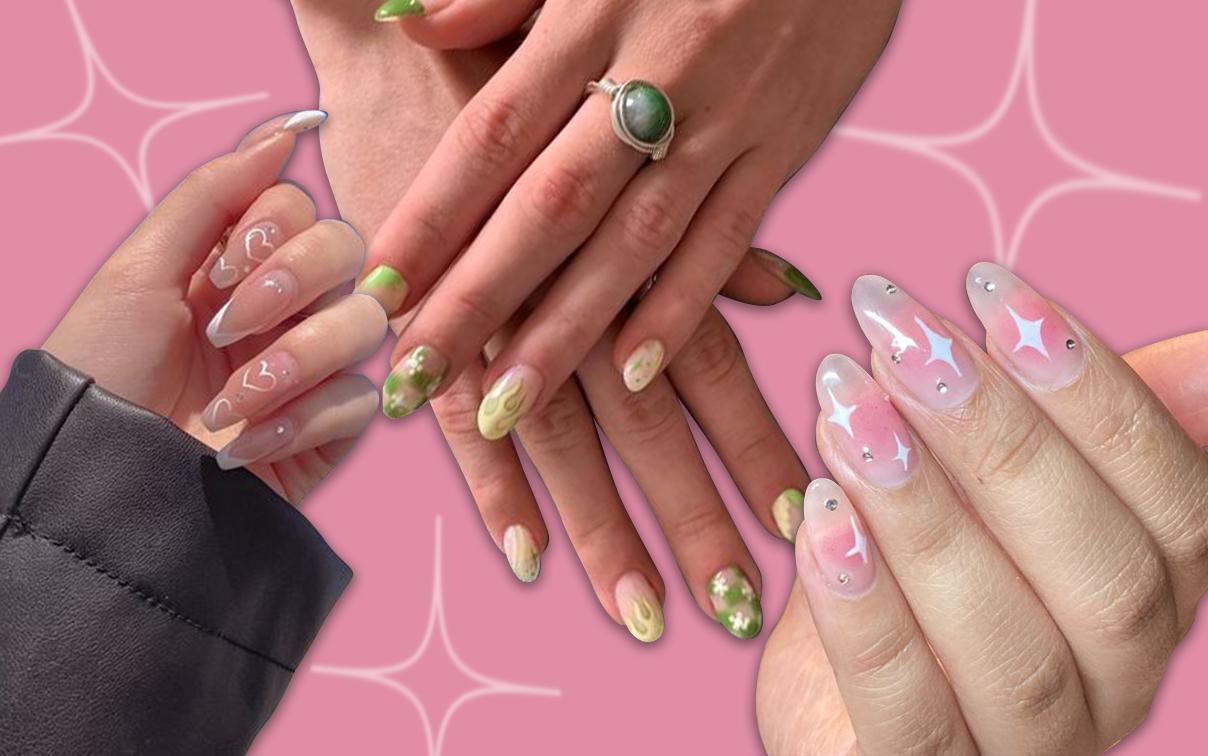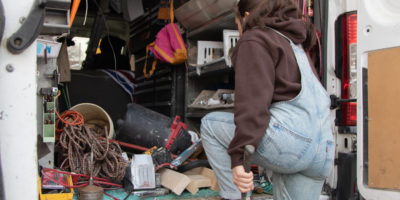By Kendra Seguin
At 10 years old, Anna Hoang remembers routinely seeing a black screen with a white cursive logo that said “cutepolish,” before the start of the step-by-step nail art tutorials she’d follow on YouTube. Back then in 2012, she used household items, from toothpicks to masking tape, to create polka-dot patterns and chevron prints on her fingernails.
This was Hoang’s first nail phase. By age 12, her interest in nail art grew so much that her mom had to put a limit on how often she painted her nails.
Hoang, now a third-year RTA media production student at Toronto Metropolitan University (TMU), remembers her mom saying, “You’re allowed once a week. If your colour changes, I’m taking it off and confiscating your nail polish.”
She eventually fell out of her nail phase for a few years, before revisiting it again during the pandemic—now with a new intensity. Looking for a way to stop her habit of skin picking around her nails and fingers, Hoang turned back to nail care. Like an influx of others who took to DIY manicures during lockdown, she relied on YouTube for lessons and inspiration.
Equipped with a freshly-purchased nail extension kit from Amazon and basic knowledge from her nail stint years ago, Hoang started practicing the techniques that would eventually lead to her current job as a Toronto nail technician.
After two years of doing gel nails and nail art at her kitchen table on only herself and her closest friends, Hoang’s family friend invited her to work out of She Flirts, a beauty salon on Toronto’s King Street West in January 2022. She works there as a commissioned nail technician, continuing to provide her signature services, with control over her schedule. The salon provides space and shared materials for the nail tech and splits her profit.
“I think it’s the connections you make in the industry”
Hoang says things picked up when she started working at She Flirts. She had real studio space, underwent technique and training courses and gained new clientele within the year. Doing nails became her primary source of income by May.
Hoang’s time in the nail industry has offered her more than just a way to pay rent. She says it has helped with her degree, networking and career possibilities. “I don’t think it’s the industry [itself],” says Hoang. “I think it’s the connections you make in the industry.”
Tatiana Tavares, a beauty artist, studio owner and instructor at Blanche Macdonald Centre in Vancouver, says all skills learned in the beauty industry are transferable.
“I think the beauty industry can be viewed as a little girly, stupid thing,” says Tavares. “Some people can treat it as a hobby, but it’s a career and a job and a business and lots of those things translate to other careers.”
Tactile hand skills, interpersonal skills and business basics are some of the transferrable skills Tavares pinpointed. She says independent beauty artists gain an additional set of skills from building their business. These include marketing, social media content creation, photography, website building and managing finances.
“It’s a career, a job and a business, and lots of those things translate to other careers”
Instead of seeing these professions as “just doing hair” or “just doing nails,” Tavares recognized the amount of work put into successfully running a beauty business. “I wish more people saw that,” she says.
The ability to make strong connections is a particularly significant skill for those working in the beauty industry. Tavares says there is a unique type of relationship-building that comes from working on beauty clients.
“There’s a certain level of comfort that you have with these people,” says Tavares. “There’s a relationship like no other when it comes to beauty services.”
Juliana Lo, a fifth-year creative industries student who runs her own lash business, agrees with Tavares.
Having experimented with makeup since middle school, Lo’s career in beauty started three years ago. It was her second year at TMU and she was balancing school with a part-time job at a grocery store. Lo had recently met her own lash tech and came across an Instagram post about lash training. One day, after a particularly exhausting shift, Lo decided to try something new.
“I had always been interested in beauty, so I decided to take the course,” she said.
Following a full day of training, including seven “super intense” hours of applying a full set of lashes to her first model, Lo learned the basics. She says it took her about six months of practice to really perfect her work.
Now as an established lash tech, Lo has recently moved out of her home studio and into a new space downstairs at Evolve Studio on Lakeshore Boulevard West in Toronto. She says she now has plenty of experience connecting with clients.
Beauty services, Hoang says, are a great way to build personal relationships with clients. She gets to know them on a personal level throughout appointments, including what they’re studying in school or where they work.
As a media student, Hoang says one of her clients recently hired her as a videographer.
“Another one told me she was looking for an internship, so I connected her to a friend of mine in the same industry,” she says. “It’s cool that my clients and I learn about one another in such a genuine way, I think it’s one of the perks of working in beauty.”











sakera begum
Thank you very much for sharing this informative update. It is a very helpful site. It has very simple solution to the problem.